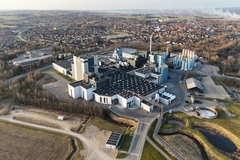
- Industry news
Industry news
- Category news
Category news
- Reports
- Key trends
- Multimedia
Multimedia
- Journal
- Events
- Suppliers
- Home
- Industry news
Industry news
- Category news
Category news
- Reports
- Key trends
- Multimedia
Multimedia
- Events
- Suppliers
Edible meat- straight from the lab

A team of scientists proposes two new techniques of tissue engineering that may one day lead to affordable production of lab grown meat for human consumption.

13/07/05 Experiments for NASA space missions have shown that small amounts of edible meat can be created in a lab. But the technology that could grow chicken nuggets without the chicken, on a large scale, may not be just a science fiction fantasy.
In a paper in the June 29 issue of Tissue Engineering, a team of scientists, including University of Maryland doctoral student Jason Matheny, propose two new techniques of tissue engineering that may one day lead to affordable production of in vitro – lab grown -- meat for human consumption. It is the first peer-reviewed discussion of the prospects for industrial production of cultured meat.
The idea of culturing meat is to create an edible product that tastes like cuts of beef, poultry, pork, lamb or fish and has the nutrients and texture of meat.
Scientists know that a single muscle cell from a cow or chicken can be isolated and divided into thousands of new muscle cells. Experiments with fish tissue have created small amounts of in vitro meat in NASA experiments researching potential food products for long-term space travel, where storage is a problem.
Matheny’s team developed ideas for two techniques that have potential for large scale meat production. One is to grow the cells in large flat sheets on thin membranes. The sheets of meat would be grown and stretched, then removed from the membranes and stacked on top of one another to increase thickness.
The other method would be to grow the muscle cells on small three-dimensional beads that stretch with small changes in temperature. The mature cells could then be harvested and turned into a processed meat, like nuggets or hamburgers.
To grow meat on a large scale, cells from several different kinds of tissue, including muscle and fat, would be needed to give the meat the texture to appeal to the human palate.
And, the authors agree, it might take work to convince consumers to eat cultured muscle meat, a product not yet associated with being produced artificially.










